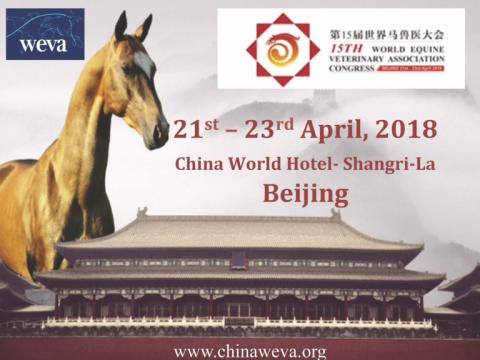Get access to all handy features included in the IVIS website
- Get unlimited access to books, proceedings and journals.
- Get access to a global catalogue of meetings, on-site and online courses, webinars and educational videos.
- Bookmark your favorite articles in My Library for future reading.
- Save future meetings and courses in My Calendar and My e-Learning.
- Ask authors questions and read what others have to say.
Biological pharmaceutical products in joint disease
Get access to all handy features included in the IVIS website
- Get unlimited access to books, proceedings and journals.
- Get access to a global catalogue of meetings, on-site and online courses, webinars and educational videos.
- Bookmark your favorite articles in My Library for future reading.
- Save future meetings and courses in My Calendar and My e-Learning.
- Ask authors questions and read what others have to say.
Read
Summary
Biologics pharmaceuticals are an interesting and rapidly developing therapeutic approach which use either stem cells or blood related products to treat a variety of joint diseases in the horse. Their exact mode of efficacy is uncertain, but it is thought they either produce (stem cells), or contain (blood products), both anti-inflammatory products as well as anabolic growth factors. They either improve the joint environment by resolving inflammation, or have a positive regenerative effect on aspects of articular biology. Whilst these products have undergone recent widespread adoption by many within the equine veterinary profession, the evidence for efficacy and benefit is currently lacking. Further, such approaches are often expensive, and it remains to be seen whether future cost-benefit analysis fully supports their use.
Keywords : Joint, biologics, osteoarthritis
Abstract
The term ‘biologics pharmaceuticals’ or ‘biologics’ is not fully defined but generally is considered to refer to the use of stem cells, and blood derived products such as autologous conditioned serum and platelet rich plasma. These products are generally autogenous in nature (although allogeneic products are occasionally used). Whilst there has been a considerable development and interest in these products, good clinical evidence of their efficacy is often lacking, although there is often considerable anecdotal support for their use.
It is important to recognise that biologics pharmaceuticals are not drugs, and will not always have clear and consistent pharmacodynamics as a manufactured drug would. These biologic derived products may produce varying effects when used in different horses, and even within the same horse.
Autologous conditioned serum (ACS) is an example of a treatment that is now available and may become more targeted in the future when clearer indications are developed. It uses the idea of specific inhibition of deleterious cytokines and mediators using anti-inflammatories produced by the animals own blood cells. Extrapolation from the human data suggests that there would be up-regulation of IL-1 receptor antagonist, IL-4, IL-10, fibroblast growth factor and transforming growth factor-b in such serum. Blood from the patient is harvested into a syringe containing special beads and incubated. The white blood cells in the blood bind to the glass beads and are stimulated to produce a variety of anti-inflammatory proteins. Following incubation, the serum is separated out, and collected to be used intra-articularly immediately, or frozen for later use.
Controlled data on its efficacy in clinical cases is currently lacking, although in an animal model of OA treated horses showed a significant improvement in lameness and improvement in some parameters of articular morphology. It is used in cases of mild synovitis and early OA, particularly where there may be reasons why corticosteroids may be contraindicated. It is also often use it to treat, periarticular conditions, for instance collateral ligament desmitis of the distal interphalangeal joint by intraligamentous injection. Further work is required to identify the clinical indications for such therapy.
Platelet rich plasma (PRP) is increasing in popularity as a therapy in equine orthopaedics. There are a number of systems and techniques available for production of platelet rich plasma in the horse (using either centrifugation or filtration), and whilst such therapies are more frequently used in treatment of tendon and ligament injuries, PRP is being increasingly used for treatment of mild to moderate osteoarthritis. It is most likely to be beneficial in cases with early cartilage pathology. I do not use PRP for joint therapy currently.
The use of intra-articularly administered stem cells is currently gaining some attention. These cells can be obtained from different sources (most commonly bone marrow or adipose derived sources) and may be autogenous or allogeneic. There is some compelling evidence for efficacy of such therapy from a goat model of stifle soft injury. The mechanism of potential benefit of stem cells is unclear, but it is likely to be more from a trophic role rather than any structural effect. There are obviously a number of different sources of stem cells, with both bone marrow derived and fat derived being the main source. We have use culture expanded bone marrow derived cells and inject approximately 10 million cells into joints, suspended in either hyaluronan or serum. The exact indication for such therapy is still far from certain. An experimental study using the carpal chip model showed no benefit of such therapy when comparing bone marrow derived and fat derived cells with control treatments. There is uncontrolled clinical data out of the Colorado group supporting the use of this therapy in cases of stifle injury, with significant improvement in cases treated with cells, even in the face of very chronic lameness. Our experience with such cells has been poor in any case with obvious OA changes, but have had some significant improvements in cases with stifle pain with minimal radiographic changes.
Get access to all handy features included in the IVIS website
- Get unlimited access to books, proceedings and journals.
- Get access to a global catalogue of meetings, on-site and online courses, webinars and educational videos.
- Bookmark your favorite articles in My Library for future reading.
- Save future meetings and courses in My Calendar and My e-Learning.
- Ask authors questions and read what others have to say.




Comments (0)
Ask the author
0 comments